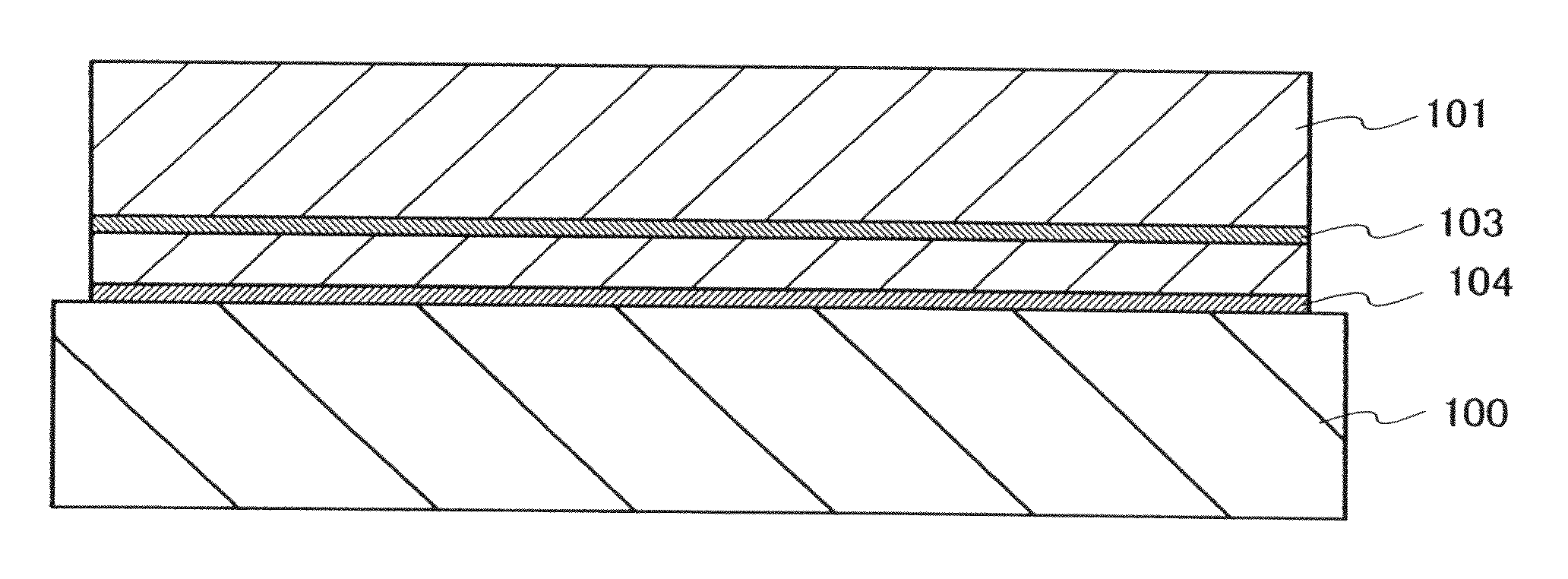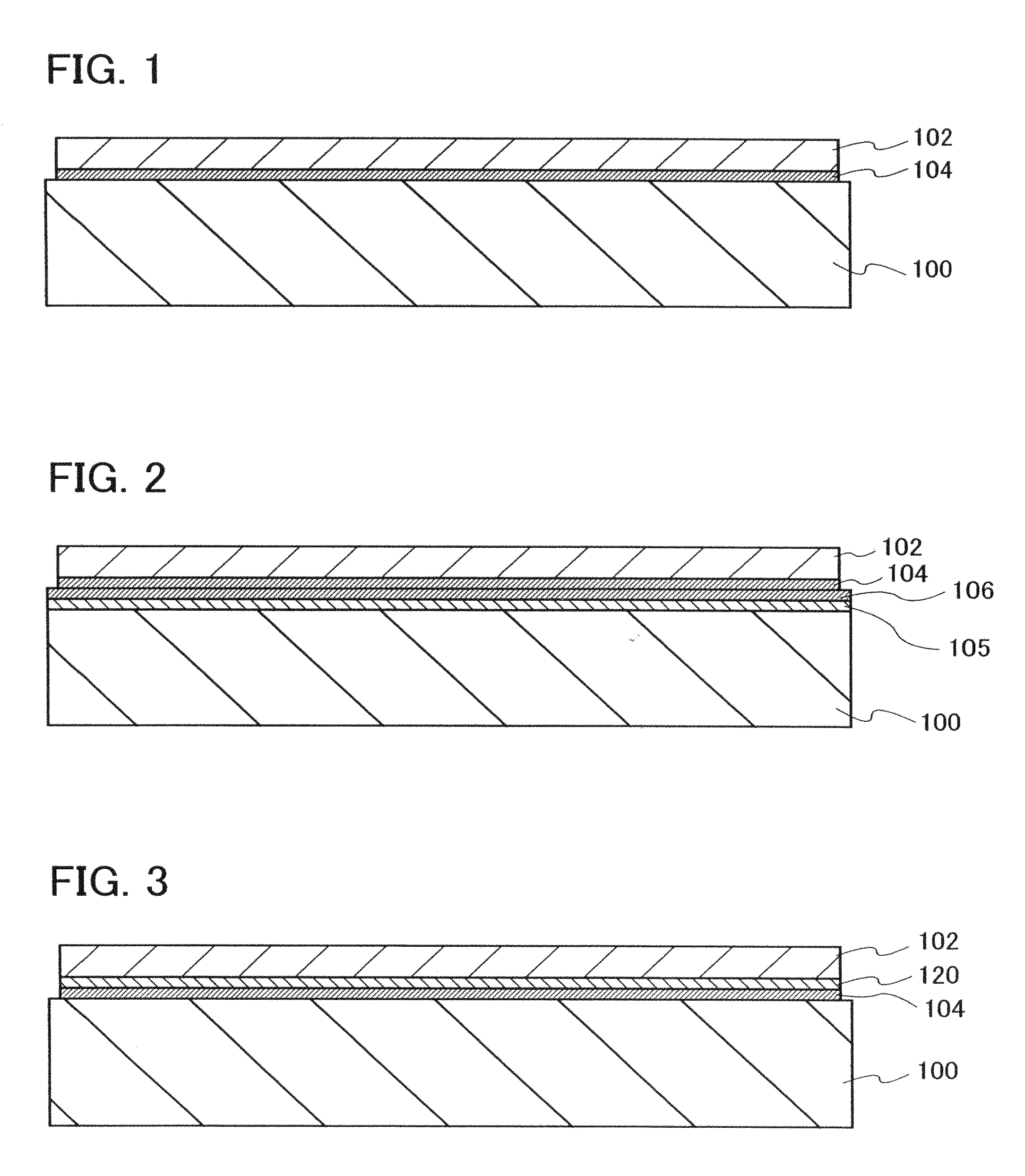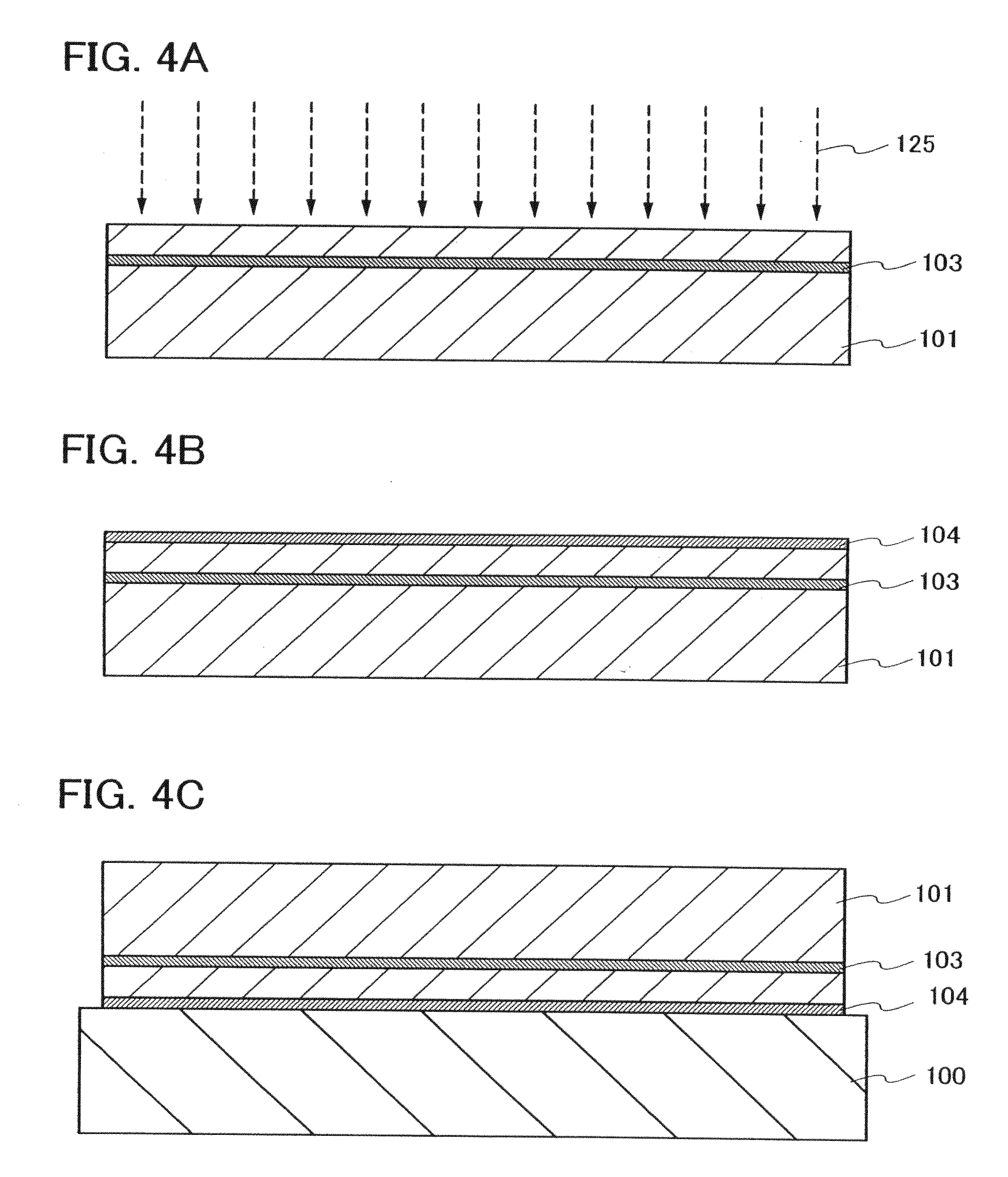Method of manufacturing SOI substrate
- Summary
- Abstract
- Description
- Claims
- Application Information
AI Technical Summary
Benefits of technology
Problems solved by technology
Method used
Image
Examples
example 1
[0118]The present inventors have confirmed that applying laser irradiation can recover the crystallinity of a single-crystalline semiconductor layer to the same level as that of a semiconductor substrate before processed. Further, they have confirmed that the laser irradiation can planarize the surface of the single-crystalline semiconductor layer.
[0119]First, a method of manufacturing an SOI substrate in this example will be described with reference to FIGS. 12A to 12H. FIGS. 12A to 12H are cross-sectional views illustrating a method of manufacturing the SOI substrate. The SOI substrate in this example is a substrate obtained by fixing a single-crystalline layer on a glass substrate.
[0120]A single-crystalline silicon wafer 501 is prepared as a semiconductor substrate (see FIG. 12A). The conductivity type of the wafer is a p type, and the resistivity thereof is about 10 Ω·cm. In addition, the crystal orientation of the main surface is (100).
[0121]First, a silicon oxynitride film 502...
example 2
[0163]A method of forming an ion-implanted layer is described below in Example 2.
[0164]The formation of the ion-implanted layer is conducted by irradiation of a semiconductor substrate with accelerated ions, and the ions are derived from hydrogen (H) (hereafter referred to as “hydrogen ion species”). More specifically, a hydrogen gas or a gas which contains hydrogen in its composition is used as a source gas (a source material); a hydrogen plasma is generated by exciting the source gas; and a semiconductor substrate is irradiated with the hydrogen ion species in the hydrogen plasma. In this manner, the ion-implanted layer is formed in the semiconductor substrate.
[0165]In such a hydrogen plasma as described above, hydrogen ion species such as H+, H2+, and H3+ are present. Here are listed reaction equations for reaction processes (formation processes, destruction processes) of the hydrogen ion species.
e+H→e+H++e (1)
e+H2→e+H2++e (2)
e+H2→e+(H2)*→e+H+H (3)
e...
PUM
 Login to View More
Login to View More Abstract
Description
Claims
Application Information
 Login to View More
Login to View More - R&D
- Intellectual Property
- Life Sciences
- Materials
- Tech Scout
- Unparalleled Data Quality
- Higher Quality Content
- 60% Fewer Hallucinations
Browse by: Latest US Patents, China's latest patents, Technical Efficacy Thesaurus, Application Domain, Technology Topic, Popular Technical Reports.
© 2025 PatSnap. All rights reserved.Legal|Privacy policy|Modern Slavery Act Transparency Statement|Sitemap|About US| Contact US: help@patsnap.com



